Emails are fast, accessible, and cheaper than most popular marketing channels. It’s not surprising that emails remain one of the most promising communication mediums despite being around for decades.
But its popularity has caused crowded inboxes, making businesses struggle for attention (and the attention span of internet users has reached a mere 8 seconds already).
Statistics show that the average office worker receives 121 emails daily. Add to that the number of emails they receive from friends, family, brands they have purchased from/are interested in/newsletters they’re subscribed to – the chances of your email getting noticed are low to none.
But as an e-Commerce business, staying on top of your customer’s minds is of utmost importance. That’s why brands must go beyond basic automation and explore innovative e-Commerce email engagement strategies.
To give you a headstart, we curated some of the best tips and tricks to use e-Commerce email engagement to hit your sales goals!
How to use e-Commerce email engagement to drive sales
Now we know every business out there has an email strategy set up. So the following sections are broken as per what stage of email marketing strategy you are at – remember to take note of what’s applicable!
-
Get your basics in place (which is not just an email tool)

With email marketing becoming all too common, brands are quick to get started with automation using the tools and technologies available. But here are some basics that can make or break the success of your e-Commerce email engagement:
-
- Segment your email list
Segmenting your email list of subscribers should be the very first step into e-Commerce customer engagement.
Email segmentation lets you hyper-personalize communication and let your customer instantly make a connection and resonate with the message or promotion. But most brands stick to creating their weekly newsletters for ‘everyone.’ When users expect personalization, the ‘spray and pray’ approach doesn’t work and never will – leading companies have failed due to a lack of personalization.
Start segmenting your emails based on audiences’ demographics, individual browsing habits, product affinities, purchase histories, campaign interactions, and behaviors. It’s also a good idea to track and identify subscription points to understand their intent for opting into your list.
Such purchase and interaction-based segmentation gets you high conversion rates and optimizes your future campaign loops.
-
- Understand the importance of email copy
Exceptional welcome emails, offer emails, and re-engagement emails have one thing in common: compelling email copy.
And two things that catch your customer’s eye as soon as the email lands in their inbox are the preview text and subject line.
Take a look at this excellent example by Nykaa:
Subject line: HUGE savings highest discounts
Preview text: Save and beam with pride with Nykaa’s Republic day beauty sale.
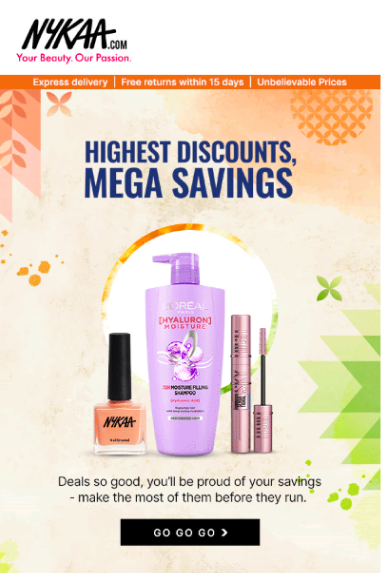
So no matter the campaign’s objective, here are some things to keep in mind while crafting your email copy:
- Create a short, tempting, and innovative subject line.
- Optimize your preview text by making it personalized and exciting.
- Use a friendly tone and everyday language.
- Address the customer’s pain points and add curiosity angles.
- Maintain high readability with ample white spaces and high-quality images.
- Build CTAs using power words and a touch of urgency.
- Create FOMO to nudge the recipient into taking action right away.
-
- Add dynamic content to your email design
Dynamic email content is a customized section in an email that can change based on the user’s data and past behavior. Since personalization is vital in engagement, dynamic content tailors emails based on characteristics such as gender, age, location, purchase patterns, and more.
Some common types of dynamic content used by e-Commerce businesses are dynamic subject lines, email bodies, footers, and product recommendations.
A lot of e-Commerce brands are yet to explore dynamic content as they’re unaware of its full potential. But the truth is, dynamic content is super helpful in designing emails like product recommendations and abandoned carts.
For example, Amazon dynamically populates product recommendations based on the consumer’s last purchase. This personalizes their communication on an individual basis, enabling hyper-personalization at all times – solutions like WebEngage are now making this strategy possible, too, with a powerful recommendation and catalog engine.

Creating responsive email designs is another crucial element of eye-catching emails. And that means your email designs must be device-friendly, considering the variety of devices at customers’ disposal.
In addition, appropriate text placement, image optimization, formatting, and color palette make communication between your customers and your business a whole lot easier.
Here’s an inspiring email example by Myntra that’s easy on the eye:

-
- Get a thorough understanding of consumer psychology
Going overboard with promotions makes you look salesy and eventually get ignored by your customers. So instead of solely listing down products, deals, and offers, focus more on the copy by understanding customer psychology.
Studying customer buying patterns, preferences, and emotional reactions to specific triggers lets you curate copy that hits the bull’s eye.
How can you do this? Include social proof like reviews and testimonials to trigger purchasing tendencies. Increase conversion rates using FOMO (fear of missing out) and scarcity techniques, such as end-of-sale countdowns, limited-time deals, etc., or including user-generated content from your social media to show how loved your products are!
Advanced e-Commerce email engagement strategies (time to get to work!)
Now that you have a layer of basics on your traditional approach to using emails for customer engagement let’s look into what you can do more to get subscribers to not just open but click through your emails to take action.
1. Go beyond basic automation
Automation and email marketing form a potent communication channel for e-Commerce businesses. But conventional email automation without any foundational psychology triggers is just a bunch of emails sent at odd times.
An upgraded solution is to use drip campaigns and automated workflows for pre, during, and post-purchase journeys. An email drip campaign uses predetermined events for sales outreach. So instead of one recovery reminder email, set up four email sequences that tap into four different psychologies to recover the abandoner.
For instance, as soon as you encounter a cart abandoner, you can send out an abandoned cart email along with exclusive offers followed by FOMO – a limited deal email, and so on.
Similarly, you can create automated workflows to welcome new users and send product recommendations and customer win-backs.
Solutions like WebEngage can also help you narrow this approach to a 1:1 level, optimizing campaign send-time for each user. You can double the engagement you get through emails by intelligently deciding the best time to send a campaign based on a user’s interactions with past campaigns.
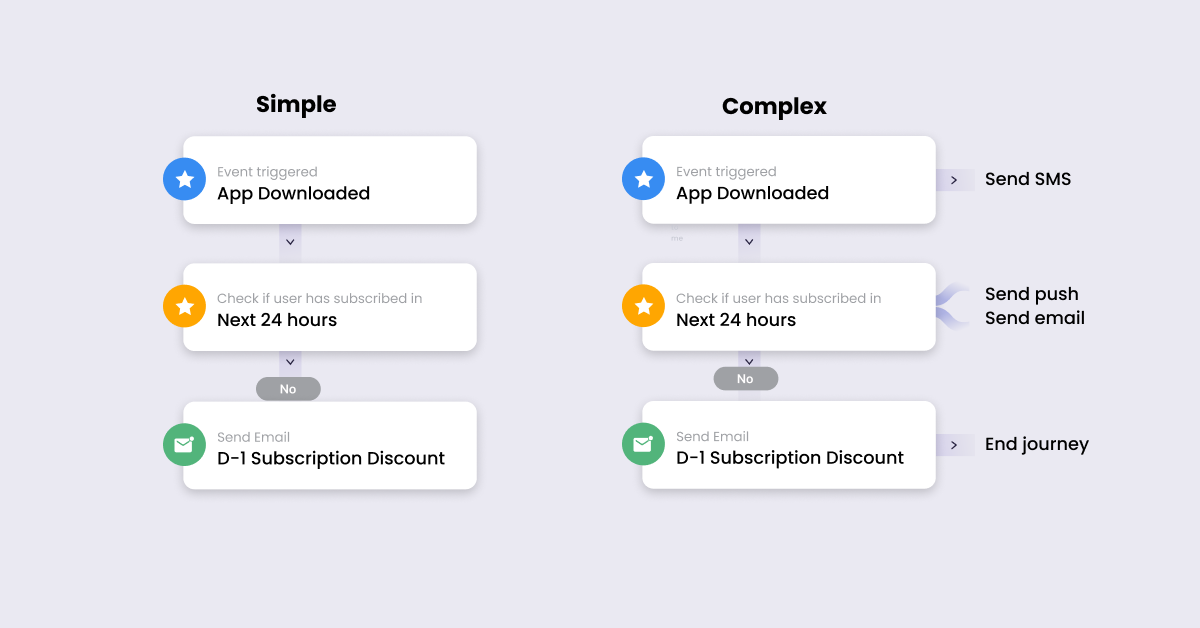
2. Use other channels in tandem
E-commerce marketing does not have to be limited to email communications alone. Often, customers are most active on messaging platforms like WhatsApp and SMS. A study shows 73% of shoppers used multiple channels throughout their purchase journeys.
To streamline the shopping experience and customer engagement, you could weave in other popular marketing channels and create an omnichannel experience.
A great example of this is sending your customer an SMS to keep an eye out for a special discount email arriving just for them.
3. Run a contest via email
Running contests is a win-win situation for both customers and your brand. Who doesn’t love free stuff?
And fun contests drive traffic to your site and bring more brand/product awareness. When done right, emails are a great way to run contests due to their high open rates and affordability.
Some best examples of email contests are order-to-win, quizzes, product giveaways, and competitions.
Here’s how you can conduct an engaging email contest using a ‘photo contest’ as an example:
Step 1: Write a compelling email copy explaining the game’s rules, add giveaway details ($100 coupon code, 50% off, etc.), and the deadline.
Step 2: Add example photos of your product in use by previous contest winners as solid social proof.
Step 3: Add a CTA that takes customers to a dedicated landing page for photo submissions.
Here’s an interesting example from Pull & Bear:

4. Use videos to make emails interactive
Videos are entertaining and make conveying complex information a breeze. They are also great at grabbing customers’ attention for longer durations.
Simply including the word ‘video’ in an email subject line can increase open rates by 6% or higher and video content in emails has a click-through rate of 65%.
Embedding videos within the email copy or signature adds depth to traditional visuals and leaves a lasting impression on your subscribers.
Here are a few ways to use videos to make your emails more interesting:
- Videos demonstrating how your product works.
- ‘Behind-the-scenes’ videos.
- A video highlighting your products’ best features.
- Fun GIFs displaying your product in action.
Here’s an example of how cleverly LEGO used videos in emails to hold a recipient’s attention:

5. Make them easy to act on
Finally, let your emails be easy to act on and understand at first glance. Ensure you stay moderate with recommendations and stick to simple formatting techniques.
Design an email that makes buying easier. For instance, include a product catalog built by keeping the targeted customer’s purchase history and wishlist in mind. Allow the customer to check out and purchase seamlessly without leaving the page.
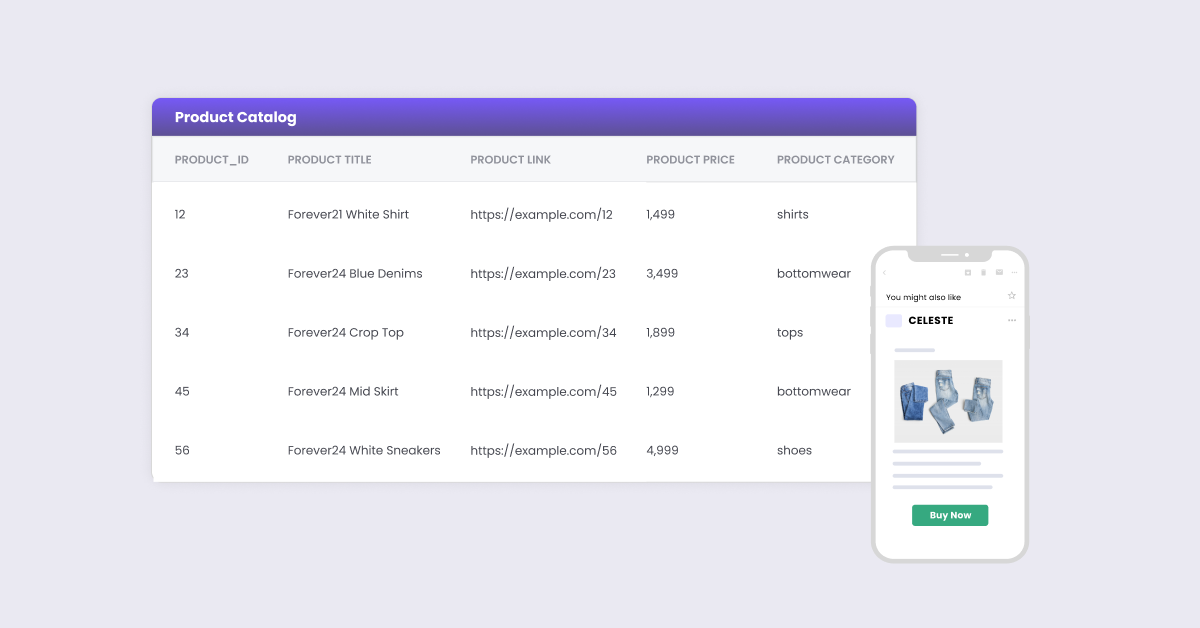
Social proof is a powerful weapon to influence purchasing behavior. Add product reviews and ratings along with strong CTAs or request a few, but ensure you make the submission as easy as possible!
Here’s an example of such an email from Casper:
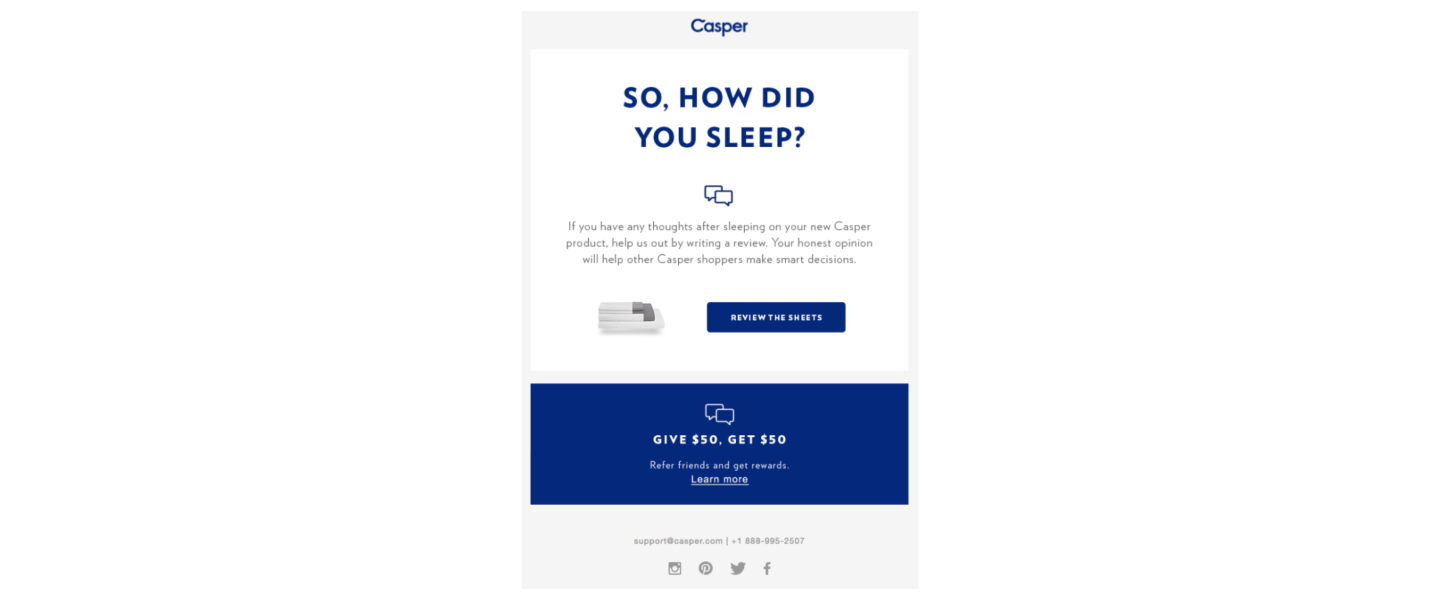
Bonus tip
Encourage a two-way conversation
Static, one-dimensional emails do not help engage customers and are often scrolled past. Emails are meant to be interactive and encourage two-way communication between senders and receivers.
Pre and post-purchase conversational emails lay the path for re-engagement and new/repeated purchases.
Action-packed emails strike up conversations, encourage recipients to get back with questions, and suggest ways to seek help from other mediums such as WhatsApp, live chat, phone conversations, etc.
Two-way open-ended conversations bring the much-needed human touch to selling and let your customers build a real connection with your brand.
Sometimes all it takes is changing your calls-to-action to nudge recipients to drop you a message on WhatsApp to avail of a deal!

Some final thoughts
Personalized email campaigns designed keeping customer engagement in mind perform exceptionally, but this is only sometimes the case. Because what engages a customer may not engage the other.
Therefore, apart from implementing basic to advanced email engagement strategies, you must continually track, measure, and iterate strategies to keep up with the evolving customer behaviors and trends.
Looking to design data-backed hyper-personalized email communications?





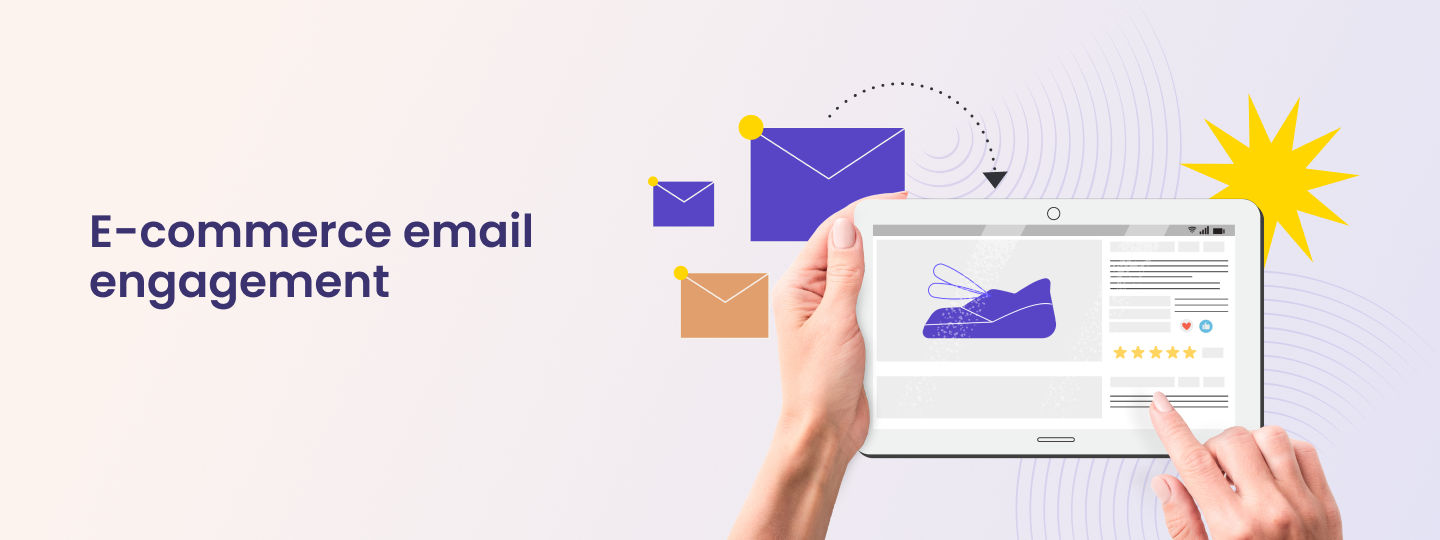

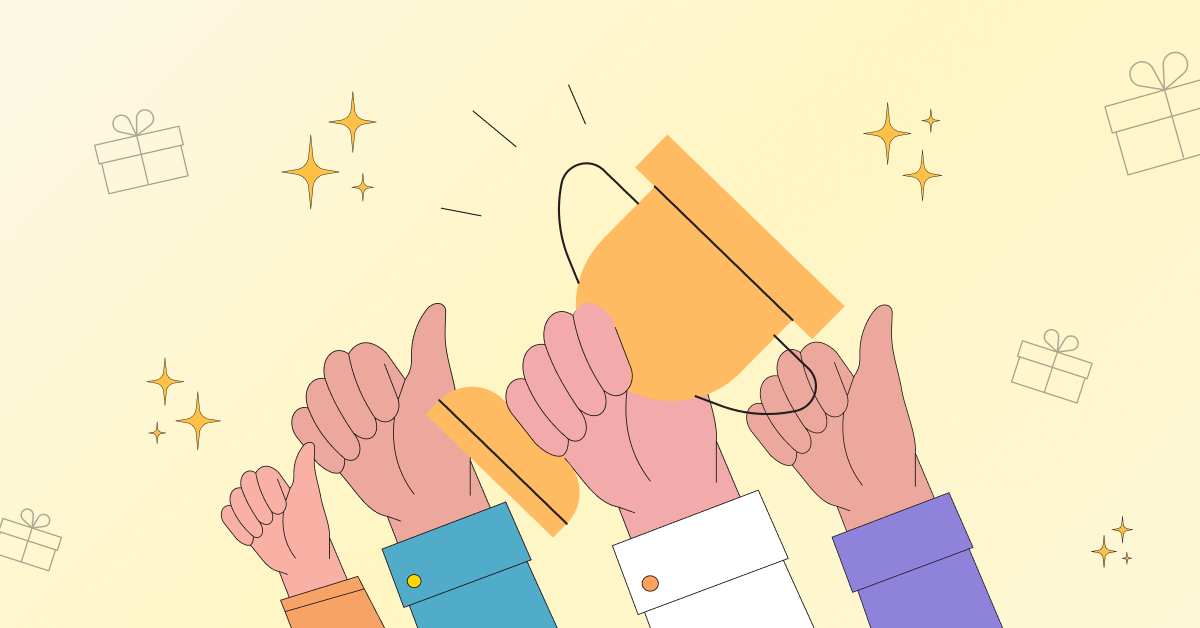
 Diksha Dwivedi
Diksha Dwivedi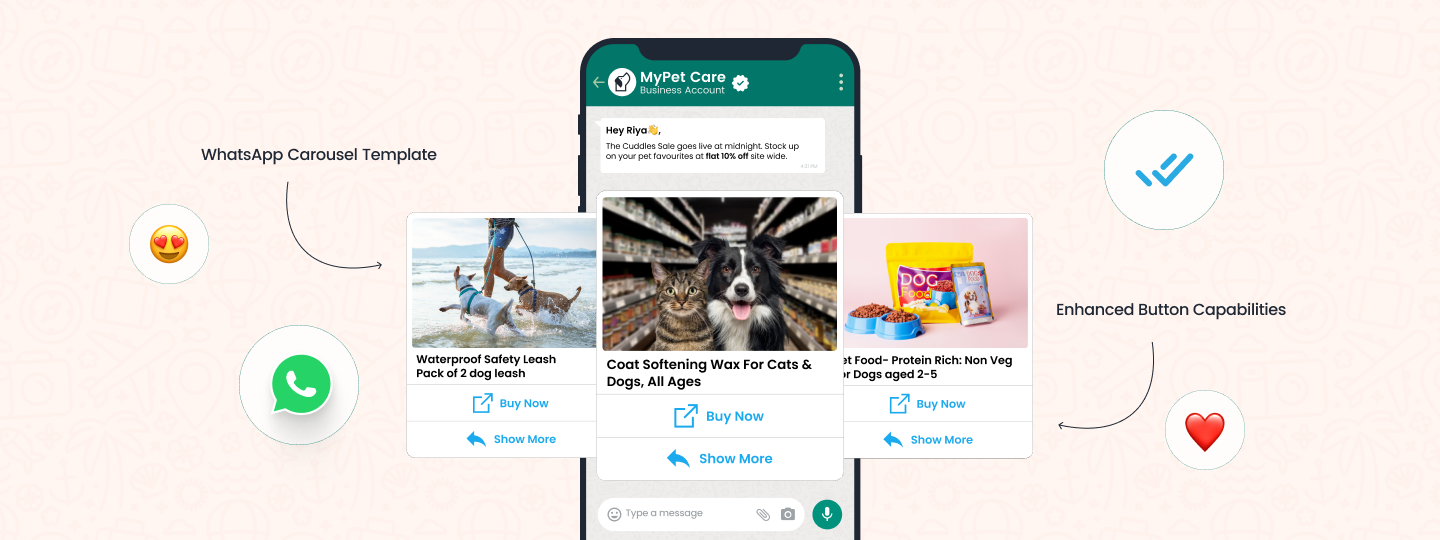
 Sanjay Mishra
Sanjay Mishra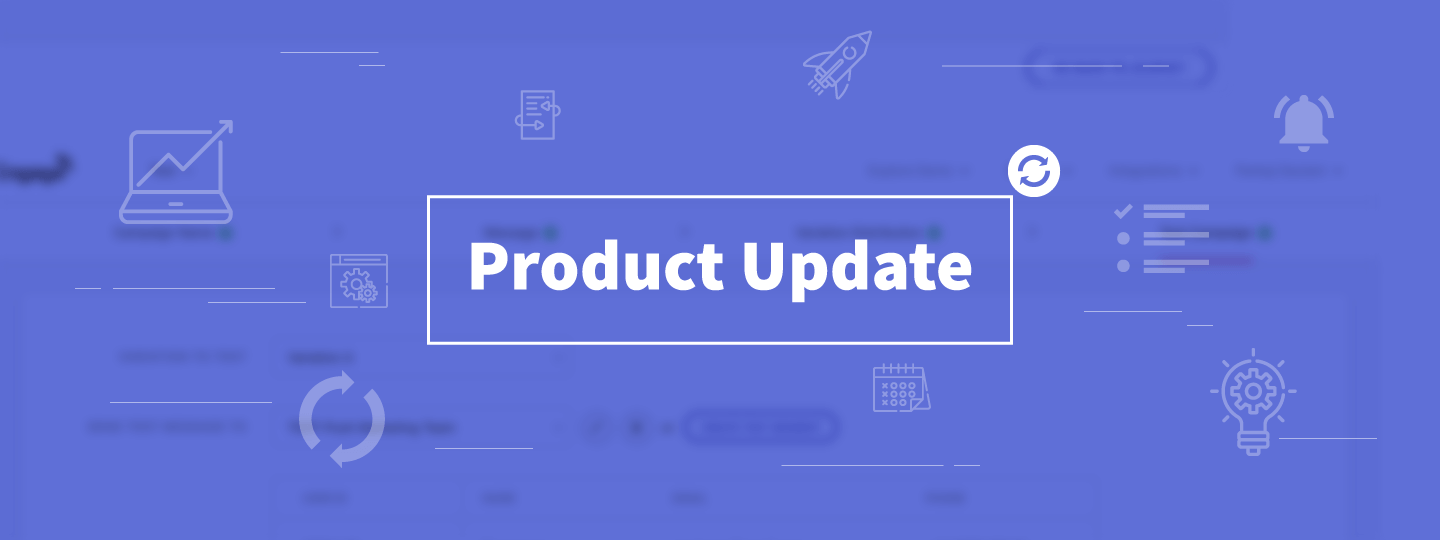
 Harshita Lal
Harshita Lal